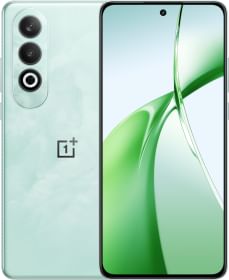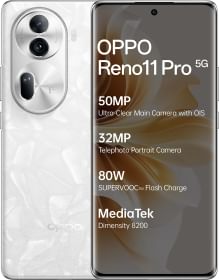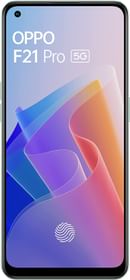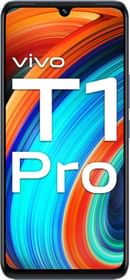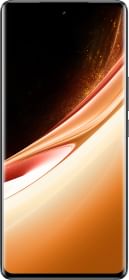Oppo F17 Pro has launched in India at Rs. 22,990. It is touted as the Sleekest Smartphone in the segment with just 7.48mm thickness. In that slim compartment, Oppo has packed in MediaTek Helio P95 SoC, 8GB of RAM, 128GB of onboard storage, and 4000mAh battery. Upfront, the phone sports a 6.43″ dual punch-hole AMOLED display, and by the back, it houses a squircle camera bump with 4 cams. (Oppo F17 Pro Review हिंदी में पढ़िए)
That’s an interesting mix of specs for sure and even more intriguing is the design dynamics of the phone. I have been using the phone for a while now. And here’s my review of it.
Oppo F17 Pro Unboxing

Here are the box contents:
- The handset
- TPU case
- Earphone
- 30W adapter and USB-C cable
- Documentation papers
Oppo F17 Pro Specs
| Model | Oppo F17 Pro |
| Dimensions and Weight | 7.48mm x 73.8mm x 160.1mm; 164g |
| Display | 16.34cm Dual Punch-hole, 2400×1080 pixels; FHD+ Super AMOLED, 60Hz Refresh Rate; 20:9 Screen Ratio, 90.7% Screen to Body Ratio; 408 PPI, Gorilla Glass 3+ |
| Color | Magic Blue / Matte Black / Metallic White |
| Quad-Camera | 48MP Main(F1.8)1/ 2” Sensor 8MP Ultrawide Angle(F2.2) 1/4” Sensor 2MP Mono(F2.4) 1/5 ” Sensor 2M Mo no(F2.4) 1/5” Sensor |
| Front camera | 16MP Main Camera(F2. 4)1/3” Sensor 2MP Depth Camera(F 2. 4)1/5” Sensor |
| Memory | RAM: 8GB ROM: 128GB 3-Card Slot can support up to 512GB |
| Processor and OS | MediaTek Helio P95 SoC with Color OS 7.2 (Android 10) |
| Battery and Charging | 4000mAh; 30W VOOC 4.0 Flash Charge |
| Others | In-Display Fingerprint 3.0, USB TYPE-C, 3.5mm jack |
| Price | Rs. 22,990 |
Oppo F17 Pro: Design and Display

This phone is freakishly thin and lite. At just 7.48 mm thickness and 164-gram weight, this is handier than Galaxy A71 (review), which is another slim fellow lying around in my home. The F17 Pro feels like a thin slice of a regular phone and the engineering is fascinating. Using it with the case adds a bit more bulk and width, making it more wieldy.
Now, this isn’t the first time Oppo has come up with such a feat. Flashback to 2014, and there was the Oppo R5, the then slimmest phone at a mere 4.85mm thickness. So, yea the Oppo designers know the drill. Let’s see how they have worked in other areas.

The fascia features a 6.43-inch FHD+ sAMOLED panel with a pill-shaped punch hole. That indent at 16.34cm takes only a tiny portion of the screen. Thus, you get a 90.07% screen to body ratio with a 20:9 aspect ratio. The display is immersive, thanks to a 50,00,000:1 contrast ratio and 408 pixels per inch. For reference, the flagship Galaxy Note 20 Ultra has only a 3,000,000:1 contrast ratio.
The only area where it lags behind is in the refresh rate, which is limited to 60Hz. In the age of 90, 120, and even 144Hz phones, this seems a small setback. Even Oppo’s much affordable A53 has a 90Hz panel. So…

Flipping to the back, you have got a ‘Shiny Matte’ two-tone finish. The refractive surface might come across as gorgeous or garish depending on your taste.
ALSO READ: Moto G9 Review
Even though it’s thin, the frame isn’t angular. Oppo has employed an industry-first 220° rounded edge. This offers not just a comfortable grip, but a polished look to the device.



The phone is flanked by volume rockers and sim tray on the right, whilst the left holds just a power trigger. This button in my unit is rather flimsy. By the top, there is only a mic. The other one is at the bottom. The calls were fairly audible for both parties. The bottom also has a 3.5mm jack, a USB-C port, and a speaker grille. In the 2014’s R5, due to its slender form factor, Oppo had to let go of the headphone jack. This had rightfully caught a lot of press attention then. But, gladly, it is not the case here. In fact, the company has bundled a decent sounding wired earphone in the box.
Lastly, to achieve such a design, Oppo claims to have used an optimized mainboard, battery, and other components inside the phone. So, let’s see what these are.
Oppo F17 Pro Performance and Software Experience

At its heart, the F17 Pro is engined by MediaTek Helio P95 chipset. I believe this is the second time we are seeing this chip inside an Oppo phone (the Reno 3 Pro being the first one). The 12nm based octa-core silicon shares an identical architecture as its P90 sibling but boasts a 10 percent gain in performance. Fine, but that doesn’t take count of the competition (more on that later).
During casual usage, I felt everything sailing smoothly. Even Color OS 7.2 (layered on top of Android 10) is much refined now. It is feature-rich and at the same time fast enough for most every day tasks. The device will be getting the new Android 11 update in November. So, that’s good too.
ALSO READ: Realme X3 SuperZoom Review




But, there are still aspects of ColorOS that I’m not a big fan of, like —
• how there is no option to roundify the quick settings tile icons.
• and how you can only swipe left to dismiss notifications.
• bloatware, although if you wish, you can easily get rid of the otherwise tough to uninstall apps and services using this guide.
Switching gears to something more taxing like high-end games, the phone does pass well.

PUBG runs at 40 fps (Balanced – Ultra | High – HD), which is not bad. I also enjoyed a few sessions of Asphalt 9 and PES 2020. Now, if you ought to have 60 frames or enjoy extreme frags, then, this isn’t the one.
In the case of synthetic benchmark tests, here’s how it fared:
| Benchmarks | Oppo F17 Pro |
| Geekbench Single-core | 400 |
| Geekbench Multi-core | 1448 |
| PCMark Work | 6986 |
| Androbench Sequential Read | 508.13 MB/s |
| Androbench Sequential Write | 195.42 MB/s |
| Androbench Random Read | 140.67 MB/s |
| Androbench Random Write | 139.83 MB/s |
| 3DMark Slingshot Extreme OpenGL | 1226 |
| 3DMark Slingshot Extreme Vulkan | 1523 |
I must say, I have seen better figures from phones far cheaper than the F17 Pro, say the recently launched Realme 7 Pro or the regular Realme 7. This is P95’s skeleton coming out of closet.
The inbuilt memory configuration of 8GB RAM and 128GB ROM with an option to expand is liberal enough. Though, the storage standard is UFS 2.1 only when there are phones with UFS 3.0 out there in this segment.
The phone supports High-bandwidth Digital Content Protection (HDCP) which enables you to cast copyrighted HD videos from Netflix and Amazon Prime to a big screen. Speaking of which, you can also watch FHD videos from both these platforms thanks to Widevine L1 support.

Rest, stuff like Super Power Saving Mode can come handy at times. Which brings us to the phone’s 4000mAh battery. I was getting 7 hours of use from it. The bundled 30W charger was quick to top it up in an hour or so. If the Oppo statement to be believed, with 5 minutes of charge, you should be able to enjoy 1 hour of snapping photos.
Speaking of which,
Oppo F17 Pro Cameras


The phone flaunts a 48MP sensor headlining the back, accompanied by an 8MP ultrawide snapper. The quartet is completed by two 2MP mono shooters. Yes, both mono. (•ิ_•ิ)? However small that maybe, even a fourth macro module would have made more sense.
The front cutout comprises of a 16MP + 2MP (depth) duo. The latter helps in portrait blur. I reckon an ultrawide would’ve pleased more buyers.
Optics aside, Oppo has some software tricks up its sleeve such as full 48MP mode, AI portrait color, AI super night portrait, AI night flare portrait, AI super clear portrait, and AI beautification mode. Phew, that’s a lot of “AI” thingies there. We’ll see how they render in real-world settings.
For now, take a look at some of the quick snaps from the phone —




With ample light, you could get some decent shots with bright colors, enough details, and an unduly pop. You could point, click, and post to socials.
Ultrawide is always cool to have and the above samples are a testament for that. You’ll have a broad frame, but with fewer details and hazy edges.
Take away the light, and you better use the Night Mode, which does a respectable job at retaining details and dampening the noise.
In the case of human subjects, the background blur is nicely done. That and features like the AI portrait (colorful foreground and monochrome background) and AI Night Flare Portrait (basically, brighter clicks) do spruce up the jpegs. But, Oppo’s tuning might not be everybody’s cup of tea. Even if you toggle off the AI beautification, the phone still hams up the makeup.
Beyond stills, you can shoot up to 4K at 30 frames per second and slow-mos at 1080p resolution.
And it’s time to recap and read the —
Oppo F17 Pro Review: Verdict

Kudos to the Oppo design team! This is the most fun I’ve had holding a device in a while. The F17 Pro is peculiarly petite in a smartphone world of Incredible Bulks. And anyone who finds the current slabs of phones as getting ever increasingly bigger would appreciate the F17 Pro’s size zero figure.
Even the rest of the specs are reasonable for the most part like the AMOLED display, 4000mAh battery, 30W charger, 48MP camera, fairly capable Helio P95 processor, and Android 10 software. Also, if you like what you see, it is relatively easier to get it, thanks to Oppo‘s robust retail reach. The F17 Pro is available across the country through leading online and offline stores.
But, if you need more from the asking price, you definitely are not out of options. You could get a smoother display, more natural-looking photos, bigger battery, faster-charging speeds, and better-abled performers at fewer bucks. It’s just that none of those phones can offer the same special in-hand feel that this one does.
Pros
- Marvelous design
- Pleasing display
- Dependable battery life
Cons
- Excess Camera beautification
- Not for demanding performance
Oppo F17 Pro First Impressions Video [in Hindi]




















